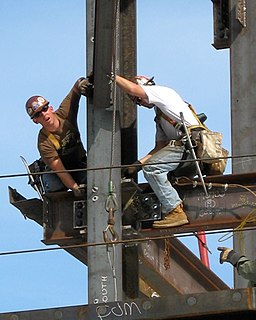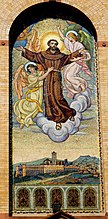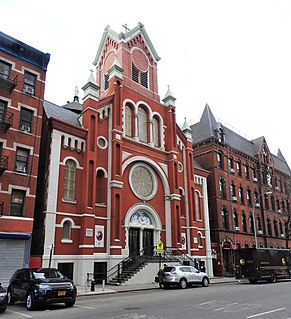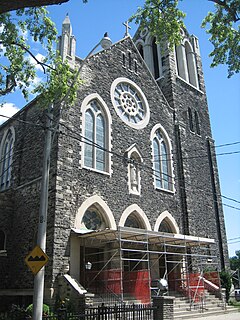Coordinates: 40°44′56″N73°59′26″W / 40.74889°N 73.99056°W

A geographic coordinate system is a coordinate system that enables every location on Earth to be specified by a set of numbers, letters or symbols. The coordinates are often chosen such that one of the numbers represents a vertical position and two or three of the numbers represent a horizontal position; alternatively, a geographic position may be expressed in a combined three-dimensional Cartesian vector. A common choice of coordinates is latitude, longitude and elevation. To specify a location on a plane requires a map projection.
Contents
| St. Francis of Assisi Church | |
|---|---|
 | |
| General information | |
| Architectural style | Gothic Revival |
| Town or city | Garment District, Midtown Manhattan, New York City |
| Country | United States |
| Completed | July 17, 1892 |
| Cost | $60,000 |
| Client | Roman Catholic Archdiocese of New York |
| Technical details | |
| Structural system | Masonry brick |
| Website | |
| St. Francis of Assisi Church, Manhattan | |
The Church of St. Francis of Assisi is a parish church under the authority of the Roman Catholic Archdiocese of New York, and is located at 135–139 West 31st Street, Manhattan, New York City. [1] The parish is staffed by the Order of Friars Minor. [2] [3]
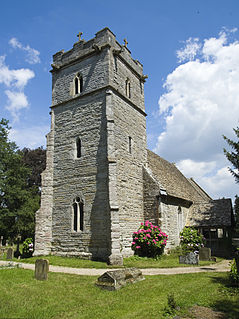
A parish church in Christianity is the church which acts as the religious centre of a parish. In many parts of the world, especially in rural areas, the parish church may play a significant role in community activities, often allowing its premises to be used for non-religious community events. The church building reflects this status, and there is considerable variety in the size and style of parish churches. Many villages in Europe have churches that date back to the Middle Ages, but all periods of architecture are represented.

The Roman CatholicArchdiocese of New York is a Latin Catholic archdiocese in New York State. It encompasses the boroughs of Manhattan, the Bronx and Staten Island in New York City and the counties of Dutchess, Orange, Putnam, Rockland, Sullivan, Ulster, and Westchester in New York. The Archdiocese of New York is the second-largest diocese in the United States, encompassing 296 parishes that serve around 2.8 million Catholics in addition to hundreds of Catholic schools, hospitals and charities. The Archdiocese also operates the well-known St. Joseph's Seminary, commonly referred to as Dunwoodie. The Archdiocese of New York is the metropolitan see of the ecclesiastical province of New York which includes the suffragan dioceses of Albany, Brooklyn, Buffalo, Ogdensburg, Rochester, Rockville Centre and Syracuse.

Manhattan, often referred to locally as the City, is the most densely populated of the five boroughs of New York City and its economic and administrative center, cultural identifier, and historical birthplace. The borough is coextensive with New York County, one of the original counties of the U.S. state of New York. The borough consists mostly of Manhattan Island, bounded by the Hudson, East, and Harlem rivers; several small adjacent islands; and Marble Hill, a small neighborhood now on the U.S. mainland, physically connected to the Bronx and separated from the rest of Manhattan by the Harlem River. Manhattan Island is divided into three informally bounded components, each aligned with the borough's long axis: Lower, Midtown, and Upper Manhattan.





